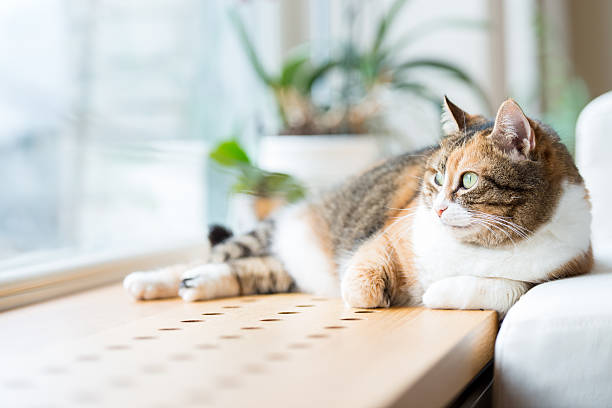Cat communication with humans| How to Read Cat Communication Signals
Cat communication with humans
Cats are affectionate and loving pets, but they can also be one of the most challenging animals to study regarding interpreting their body language and moods, especially when you compare the pet with the dog, which has easily understood signals.
However, cats use entirely different communique signals, each in terms of communicating with other cats, and additionally with people. Cats’ channels of communication encompass sound alerts, body language, facial expressions, and much more. When you can accurately interpret these indicators, you will better understand your cat’s mood and what they’re trying to communicate to you!
If you find yourself constantly flummoxed on interpreting your cat’s moods and want to have a better way to interpret their communication signals, this article will help. Check some key conversation signals commonly used by cats and what the signs mean.
The cat’s tail
The cat’s tail can communicate a whole range of language and feelings, and as that is one of the most glaringly identifiable parts of the body, the tail makes for an excellent place to begin!
A cat with a tail is held up high and erect suggests self-assurance, interest, and commonly, happiness. If a typical cat wanders up to you in the road with their tail on this role, it’s far safe to assume that they need to say what’s up!
When the cat’s tail is held low and firm, this is a great indication to backpedal as your cat is irritated or seeking out a scrap! However, it is well worth considering that their tail’s natural position is lower than others for some breeds, so get to understand the typical posture of your very own cat’s tail whilst interpreting this.
If your cat has its tail firmly clamped down towards its butt, this suggests that your cat is unsettled or scared.
A tail that is swinging tautly forth and back is a clear caution sign that your cat is becoming aggressive; you can additionally see this tail posture as a part of hunting behaviour, or play. The faster the swinging, the more angry your cat is! The gentle swishing of the tail, but, shows interest. If the tail’s top is twitching slightly however the tail is relaxed, this is a pleasant, contented sign.
If the cat’s tail is bushed up like a bottle brush, this indicates that your cat is in combat or flight responses have kicked in, and your cat is attempting to make themselves look as huge and dangerous as possible!
The ears
If your cat’s ears are in a cozy position and pointing forwards, they may be either taking note of something or are generally at peace and content. Ears laid flat returned in opposition to the head suggests either worry or anger; these two emotions will provide a cue to your cat to shield the sensitive ears via making it into as small a target as possible.
When one of your cat’s ears is inside out, they have got probably just given it an excellent wash!
The fur and frame
A calm, happy cat’s fur can be mendacity flat and easy, however, if your cat’s fur is bushed up, both something has unsettled them, or they may be squaring up for combat! When a cat is getting ready to combat or guard themselves, the fur throughout the entire body will stand on and make the cat appearance as large and implementing as viable to possible threats. They will even often arch their backs and present a side-on view of their body to their opponent, which once more, are all intended to make the cat look larger.
Eye touch
In the human language, making eye contact whilst we’re speaking to each other is our manner of letting others recognize that we’re listening and interested in what they may be saying to us. Not making eye contact is considered very impolite!
However, making direct eye contact for cats is the peak of terrible behaviour, and shows dominance and probably, an opportunity. This is why cats most often seem to go directly and quickly towards the person in the room who’s either scared of cats or not especially keen on them; the person can deal with it effectively by avoiding looking at the cat hoping to be left alone, and yet in cat language. The cats displaying this typical behaviour should be rewarded with the first hi there!
Verbalizations
Some cats are chattier than others, with the Siamese and Bengal being good examples of specifically talkative cats! While some cats will rarely meow in any respect, others may have a distinct language of meows that you’ll soon discover ways to interpret. Much like a new mother and father quickly analyze to tell a toddler’s hungry cry from a sad cry, so too will you be able to study your cat’s meowing for food, versus meowing for interest or something else.
Cats that are hunting or play-looking often make a trilling or chattering sound in the back of their throats, and this is something which you won’t generally hear in different situations. Growls and hisses are clear warnings of anger or protective aggression while howling, or yowling can be a crucial part of cat mating behaviour or indicate ache, threat, or disappointment.
Summary of Cat Behaviour and Signals
In your quest to study cat language and get better on the way to explore your cat, it is essential to interpret your cat’s behaviour signals together with each different and their environment and what is going on on the way to make an accurate prediction of their moods. Merely making a judgment on how your cat is feeling or attempting to inform you by looking at one signal will continuously result in you making an incorrect conclusion!



